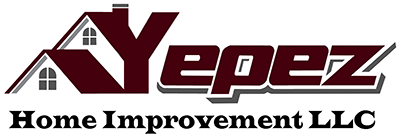Drywall
Prior to the first World War, most homes had lath and plaster for their wall material. The housing boom at the end of the war demanded a quicker, more efficient way of building homes. Rising to the challenge, the construction industry evolved the development of drywall.
Drywall is made of gypsum, compressed between 2 sheets of paper. The drywall sheets are then put into place on your interior walls, taped at the seams and can be textured, painted, or wallpapered, depending on your personal preference.
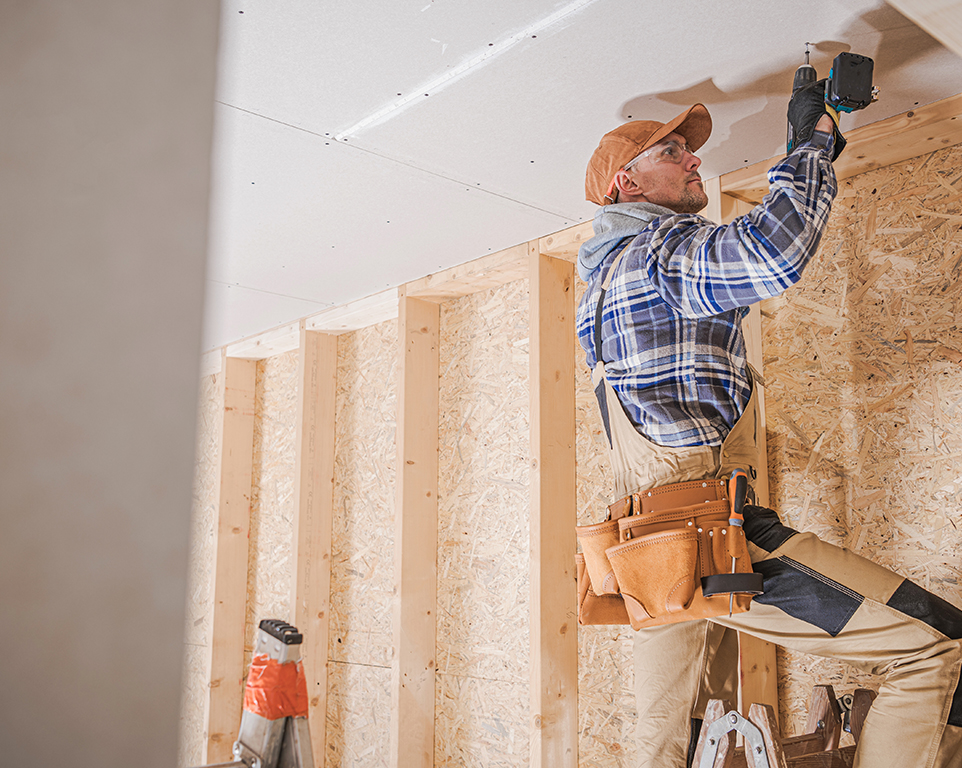
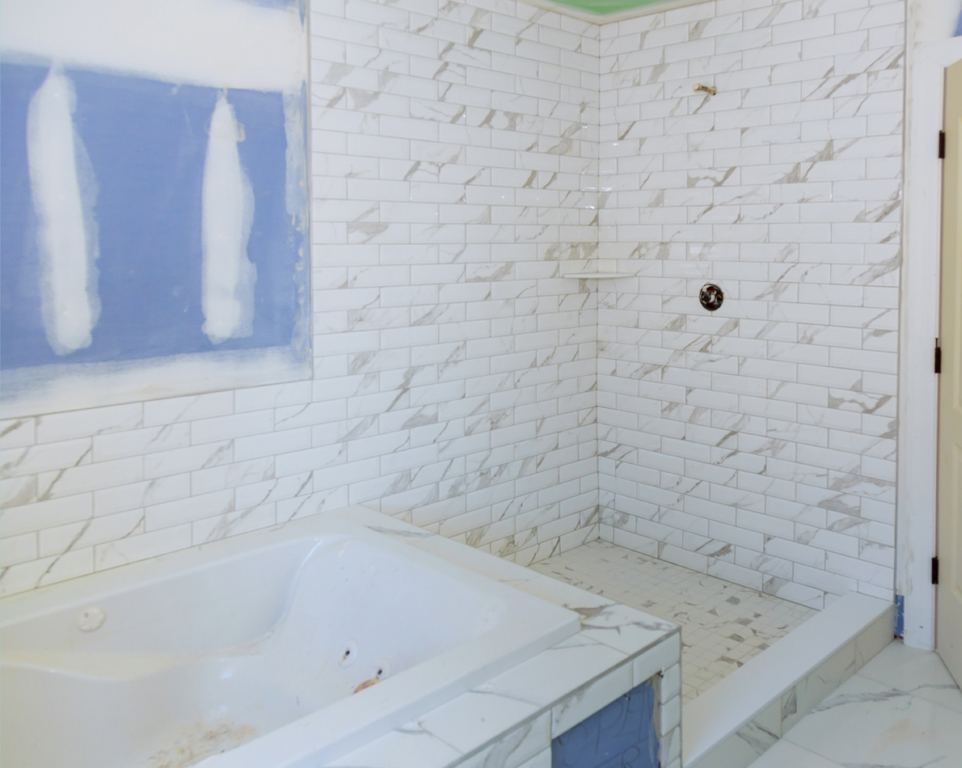
Types of Drywall
There are 6 primary distinct types of drywall, each with their own specific benefit or application.
Whiteboard. This is the most traditional form of drywall. The most common size is 4’x8’, though specialty sheets up to 12’ are available for lofty ceilings and smaller pieces are available for repair work.
Mold-Resistant. The name pretty much sums up the benefit of this style. This is also known as “green board” and the paper is thicker and coated with wax for increased moisture resistance. There is also a fiberglass mesh that inhibits the growth of mold, by removing access to the “food” it needs.
Plasterboard. This is also called “blue board.” It is used primarily in older homes to give the look and feel of lathe and plaster, hence the name.
Soundproof. Again, the name is pretty darn descriptive! Additional wood fiber, gypsum, and other items are used to increase the sound transmission class (STC) and decrease the sounds heard outside the room.
Fire-Resistant. Using fiberglass to slow fire progress and burn more slowly, fire-resistant drywall is best utilized in areas such as basements or around equipment like furnaces.
VOC-absorbing. With the recent focus on VOCs and their potential health risks, this newer style captures chemicals and other volatile organic compounds and traps them within the drywall.
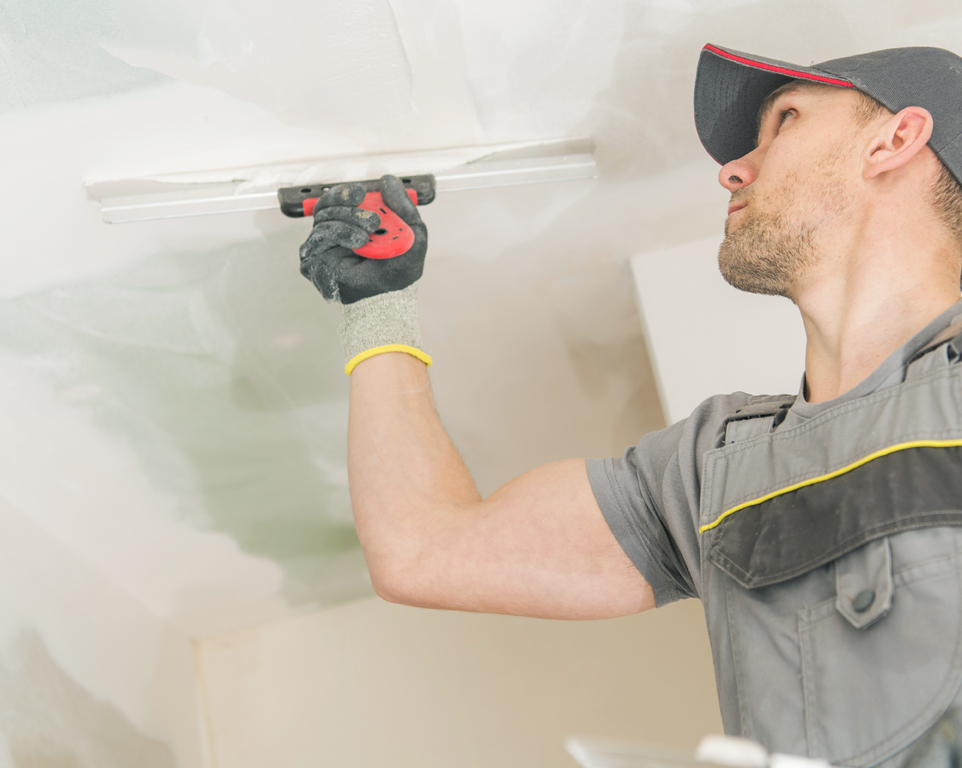
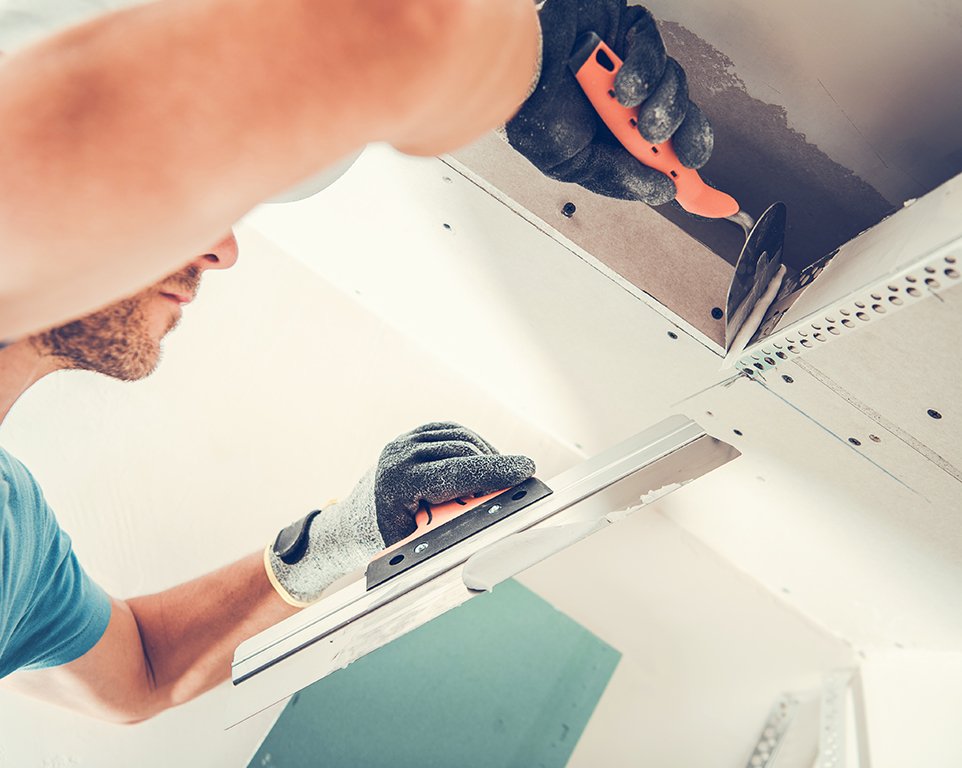
How Yepez Does Drywall
At Yepez Painting and Construction, we do drywall right. Beyond the simple selection of the type of drywall appropriate to your needs, there are a host of steps involved in making certain it looks and performs as expected.
Installation. The Yepez team first ensures your installation is done correctly. We adhere to the adage “measure twice and cut once” to guarantee a flawless fit.
Tape. Each drywall sheet seam is fully taped with high quality taping material to ensure no visible seams remain after the project is completed.
Texture. Depending on your personal preference, the skilled craftsmen of Yepez Painting and Construction can embed texture on top of the drywall. This adds visual interest, depth, and individuality to your walls.
Prime. Drywall is naturally an absorbent material. To guarantee a final product you are proud of, it is important the walls be properly primed and made ready for final application of either paint or wallpaper.
Paint. Obviously, painting is one of our specialties, it is right there in our name! Custom colors, clean crisp borders and thorough clean-up are the hallmarks of a Yepez painted home.
